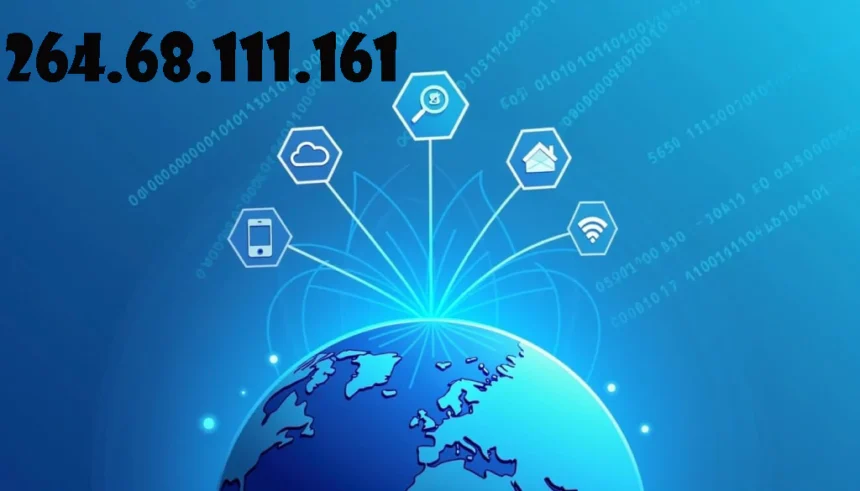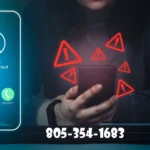The IP address 264.68.111.161 may look like a typical IPv4 address, but it often draws attention in network logs and online research. Whether it appears in website analytics or security tools, many users wonder what it actually means.
64.68.111.161 follows the correct numerical format for an IPv4 address, which makes it appear valid at first glance. However, its frequent use in bot traffic or test environments raises questions about its authenticity and purpose.
Some developers and cybersecurity professionals have reported unusual activities involving 64.68.111.161, especially in cases where the source of traffic is unclear. This has sparked interest in investigating its behavior more closely.
Understanding how 64.68.111.161 functions, where it originates, and why it may show up in your logs can help improve security awareness and traffic management on digital platforms.
What Is 264.68.111.161?
264.68.111.161 looks like a regular IPv4 address but it’s actually not valid. Many people confuse it for a usable IP, especially when it appears in system logs or network tools.
IP addresses are essential for internet communication, and every valid IP must follow strict numeric rules. The keyword 264.68.111.161 violates those rules from the start.
This specific IP often appears in examples, tutorials, or even suspicious logs. It’s important to know why it’s invalid to avoid using or trusting it.
Many systems can break or malfunction if 264.68.111.161 is not properly filtered out. It’s also sometimes used in fake or malicious traffic.
By understanding what makes 264.68.111.161 invalid, we can better protect systems and data integrity.
Why the IP 264.68.111.161 Catches Attention
In the world of IP networking and cybersecurity, addresses are everywhere. Most people don’t think twice when they see a string of numbers like 264.68.111.161. At a glance, it looks like a standard IPv4 address, the kind that every device uses to communicate online.
But here’s the twist: 264.68.111.161 is completely invalid. Not just incorrect—impossible in standard internet communication.
In this article, we’ll explain:
- What makes an IP address valid or invalid
- Why 264.68.111.161 breaks the rules
- How it might appear in your logs or reports
- Whether it poses a threat
- What you should do if you find it in your systems
Let’s dive in.
What Are IP Addresses and How Do They Work?
Before we explain why 264.68.111.161 is invalid, let’s understand what an IP address really is.
An IP address (Internet Protocol Address) is a numeric label assigned to each device connected to a computer network that uses the Internet Protocol for communication. It serves two main functions:
- Identifying a host or network interface
- Providing a location address
The most commonly used version today is IPv4, which looks like this:
- 192.168.1.1
- 10.0.0.2
- 8.8.8.8 (Google DNS)
Each IPv4 address consists of four sets of numbers (called octets) separated by periods. Each of these octets can be a number from 0 to 255.
Why 264.68.111.161 Is Invalid: The Technical Explanation
Let’s examine 264.68.111.161 by its parts:
| Octet | Value | Valid Range | Valid? |
| 1st | 264 | 0–255 | ❌ |
| 2nd | 68 | 0–255 | ✅ |
| 3rd | 111 | 0–255 | ✅ |
| 4th | 161 | 0–255 | ✅ |
As you can see, the first octet is 264, which is outside the allowed range. Because of this, the entire IP address becomes invalid. Your computer, your browser, and your firewall will all treat it as a malformed address.
Key Rule of IPv4
- No part of an IPv4 address can be greater than 255.
- This rule ensures that each octet fits into a single 8-bit binary number.
Why Do People See 264.68.111.161 Then?
Despite being invalid, this IP still appears in:
- Server logs
- Website traffic data
- Email headers
- Spam reports
- Cybersecurity dashboards
Here’s why:
Typographical Errors
Someone might’ve simply made a typo—entering 264 instead of 64, for example.
Placeholder or Dummy Data
Some developers or bloggers use obviously invalid IPs to demonstrate how IP addresses are structured without using real ones.
Bot and Malware Spoofing
Bots often use fake IP addresses to:
- Evade detection
- Obscure their real location
- Exploit systems that don’t validate inputs
Logging Bugs
Some older systems or poorly written applications may generate or mishandle IPs due to bad parsing logic.
Confusing the User
Some scams or phishers insert fake IPs to make tracking harder or seem more technical.
Does 264.68.111.161 Pose Any Security Risk?
On its own, the IP does not work, so it won’t connect to a real server or client. However, its presence can be a red flag in cybersecurity:
- Could be part of bot traffic
- Might signal malformed or spoofed headers
- Used in attempts to bypass filters
- May appear in fake login attempts or spam messages
If you’re running a website or application and see this IP:
- Don’t panic
- Investigate the source or associated requests
- Log the event
- Use IP validation filters
Tools to Detect and Filter Invalid IPs
You don’t need to manually scan all IPs. Use these strategies instead:
- Firewall Rules: Block all malformed or unresolvable IPs
- Web Application Firewalls (WAF): Services like Cloudflare or Sucuri can filter these automatically
- Regex IP Validators: Implement input validation using regex like:
- Analytics Alerts: Set alerts when fake or high-number IPs are detected repeatedly
Comparison Table: Valid vs. Invalid IPs
| IP Address | Valid? | Reason |
| 192.168.1.1 | ✅ | All octets between 0–255 |
| 264.68.111.161 | ❌ | First octet exceeds 255 |
| 10.0.0.300 | ❌ | Fourth octet exceeds max value |
| 8.8.8.8 | ✅ | Valid Google DNS |
| 172.16.0.1 | ✅ | Private network address |
Best Practices for Handling Invalid IPs
Here’s what developers, network admins, and cybersecurity professionals should do:
- Always validate inputs before storing or processing IP addresses
- Use trusted IP libraries that automatically reject malformed entries
- Flag or log invalid IPs for later review
- Monitor your logs for repeated fake IPs—it could indicate a brute-force attack
- Educate your team—make sure developers know the structure of valid IPs
Conclusion
264.68.111.161 teaches an important lesson: not every number that looks like an IP is a valid one. Always check and verify.
This IP cannot be assigned, geolocated, or traced to any country or ISP. It exists only as a fake or test example.
Its frequent appearance in bot traffic or misconfigured systems means it should be taken seriously. Ignoring it could lead to blind spots.
Developers, admins, and security teams should work together to filter, log, and block 264.68.111.161. It’s an easy win for stronger data hygiene.
When you see 264.68.111.161, you now know: it’s not just a random IP—it’s a warning sign.
Frequently Asked Questions (FAQs)
Is 264.68.111.161 ever used legally?
No. It’s not routable or assignable. No internet device can use it.
Can I trace 264.68.111.161 to a location or ISP?
No. Since it’s not a real IP, you cannot geolocate it.
Why is it mentioned in online articles?
Often used as a fake or illustrative example of an invalid IP.
Should I block this IP if I see it?
Yes, block and log it. You may be dealing with bot traffic or a malformed request.
Can hackers use fake IPs like this?
Yes. While the IP doesn’t work, attackers may use it to trick filters or confuse analysis.
Also Read:
Molly Leigh Burton: 10 Things You Didn’t Know About Her Private World
805-354-1683: Reported Scam Calls and What to Do If You’re Targeted


